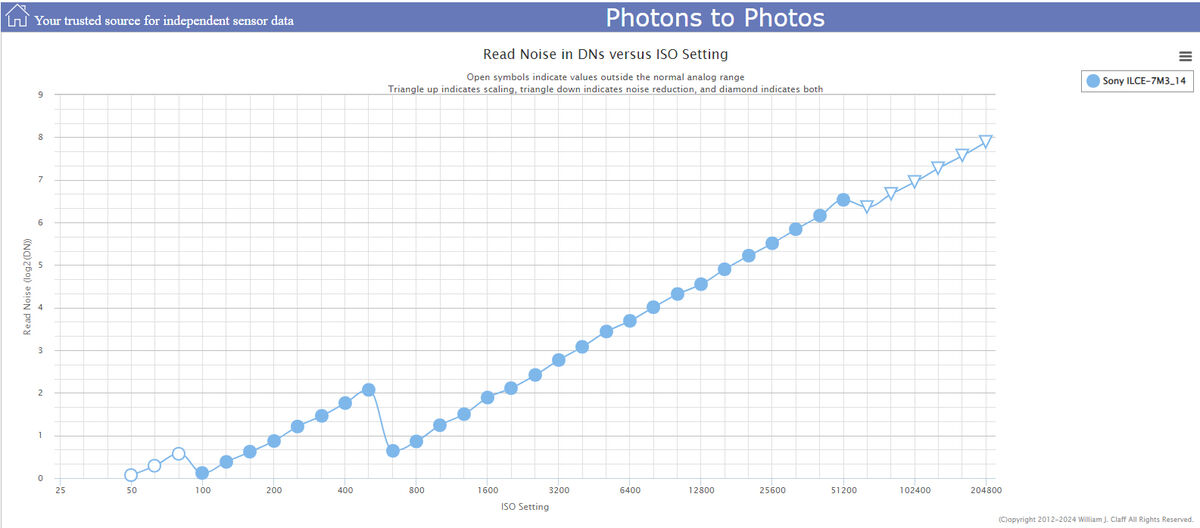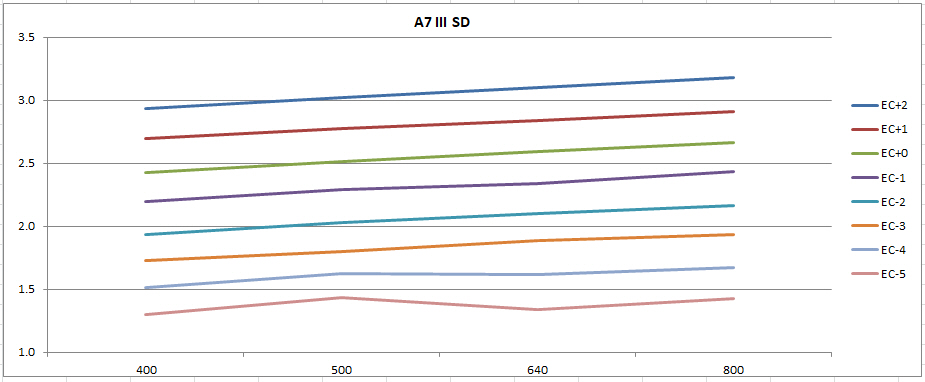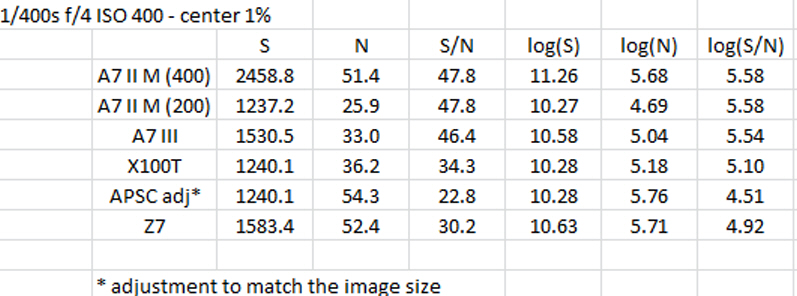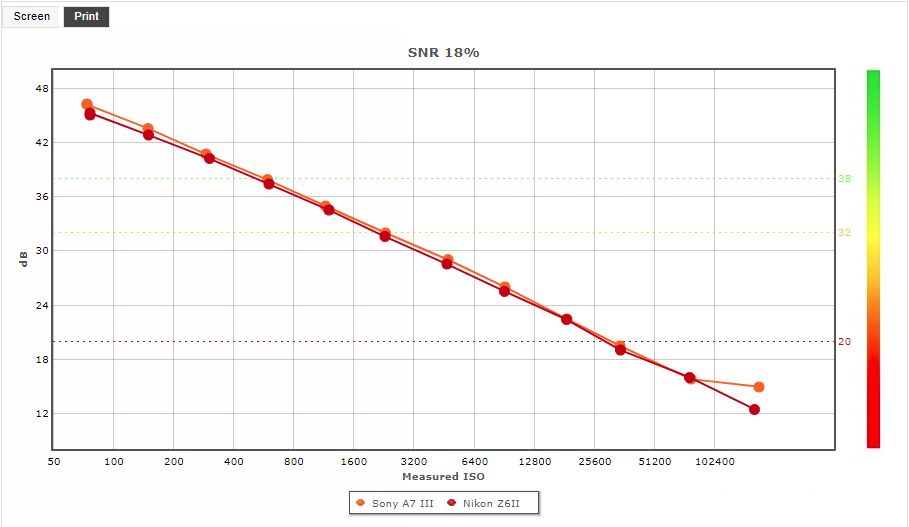Does changing the ISO alter the visible noise?
Mar 19, 2024 17:14:29 #
selmslie wrote:
You must find it fascinating. You are drawn like a moth to a flame.
Or are you just permanently on vacation?
Or are you just permanently on vacation?
You seem to be replying to some other thread, neurologically short circuiting.
Mar 19, 2024 17:20:25 #
User ID wrote:
You seem to be replying to some other thread, neurologically short circuiting.
No, I am just responding to your posts.
Are you sure you are on the right thread?

Mar 19, 2024 18:24:12 #
selmslie wrote:
No, I am just responding to your posts.
Are you sure you are on the right thread?
Are you sure you are on the right thread?

I could be time warped into one if your older threads. Theyre all the same, so it would be really impossible to tell.
Mar 19, 2024 18:31:03 #
User ID wrote:
I could be time warped into one if your older threads. Theyre all the same, so it would be really impossible to tell.
You clearly find them irresistible. Maybe you need to look for something different.
Mar 19, 2024 18:41:53 #
I read this section for common practical knowledge and advice. Sometimes I am severely confused and disappointed.
Mar 19, 2024 19:33:40 #
druthven wrote:
I read this section for common practical knowledge and advice. Sometimes I am severely confused and disappointed.
I can sympathize with your confusion. Noise is a complicated topic that is misunderstood by the majority of photographers. The following may offer some comfort.
Select your camera for its features, not for its dynamic range or signal to noise performance. If the camera's features convince you to spend a heap of money on a high resolution camera, avoid looking at the results at 100%. When you look too closely for noise you might find it. That could lead you to waste your time worrying about noise and how to reduce it.
But if you only view the image at a size that you intend to present to the viewer, you may not see any noise at all. After all, at a normal viewing distance you only need about 12MP. That is enough to make a great 8x10 print to be viewed from about 10 inches, the normal viewing distance. If you make a larger print, you will need to back away to see it all because the normal viewing distance changes proportionately and 12MP will still work.
And if your goal is to prepare an mage for display on a monitor, a width of about 2000 pixels is plenty. That's much less than 12MP. Even if you want to display it on a high resolution screen, a 4000 pixel width is plenty. It will be 4x as many MP as the 2000 pixel image but still less than 12MP.
There are commonly sense ways to avoid noise such as proper exposure and not cropping tooo much.
I personally never do any post processing to reduce noise since it would mean that I already failed during the image capture.
Mar 19, 2024 20:13:24 #
Rick from NY wrote:
Why is anyone bothering to engage with this guy? He knows he’s right and we are all physics 101 morons. Replying to him is what gets him off.
Why didn't you just ignore the thread? Everyone needs to be heard, even when they have nothing useful to say?
-
-
-
I include myself!



---
Mar 19, 2024 23:25:23 #
This has been extensively studied, but ISO on a digital camera is nothing more than applied amplification. Whatever exposure EV level you're at, noise is magnified along with the signal, but of course in bright lighting the noise is overshadowed by the strong signal level. In dimmer lighting, lower EV levels, there is not much signal compared to bright lighting, so noise is more apparent. Longer exposure when all else is equal will also increase noise. Increased temperature will also increase noise level - which becomes noticeable when shooting video for extended times. Sensor heating produces lots of noise. It's important to note that noise is from the electronics - mainly the sensor and supporting processors.
Mar 20, 2024 05:59:55 #
chrisg-optical wrote:
It's important to note that noise is from the electronics - mainly the sensor and supporting processors.
There are two basic sources of noise, read noise and shot noise.
Read noise can be measured by covering the lens to block all light and taking a series of exposures at different ISO settings. Since there is no light reaching the sensor, what is recorded is only read noise. Read noise can be affected by heat and long exposure.
With a dual gain processor it is easy to see the transition between low and high ISO processing by looking at the read noise. This will impact the dynamic range of the sensor at that point and it can affect the S/N ratio in very dark parts of the image. The discontinuity makes it possible to distinguish the impact of shot noise versus read noise.
Shot noise is related to the random arrival of photons in a normal exposure. It is the most important contributor to the S/N ratio. Under normal circumstances, read noise does not impact the noise that is visible in the image until the recorded image is well below middle gray (EC+0). Newer and larger sensors can do a better job with shot noise but they can't overcome the fundamental nature of quantum physics.
If the noise is not visible it does not matter. But underexposure followed by brightening the image in post processing, shadow recovery, image enlargement and pixel peeping can make it easier to see the noise.
The discontinuity between ISO 500 and 640 shows that this camera has a dual gain processor

(Download)
The discontinuity only starts to become apparent at EC-4 and it is clear by EC-5

Mar 20, 2024 06:42:14 #
selmslie wrote:
We should already know that visible noise (signa... (show quote)
If you set your ISO high you throw away the clean part and keep only the noisy part.
Mar 20, 2024 10:20:52 #
selmslie wrote:
Shot noise is related to the random arrival of photons in a normal exposure. It is the most important contributor to the S/N ratio.
To illustrate this I took some test images of a standard target with four different cameras set to 1/200s and f/8. At ISO 400 this would have produced about the same brightness as middle gray, EC+0 with the exception noted below for the A7 II M.
The measurements for each camera were taken from a rectangle at the center of the image adjusted to capture 1% of the image.
1. The 24MP A7 II M has no Bayer array. When the ISO is set to 200 it behaves as it would have with the ISO set to 400 and the Bayer array in place. The S/N ratio turned out the be the same at either ISO setting.
2. The 24MP A7 III at ISO 400 appears to use about the same gain program at ISO 400 as the A7 II uses throughout its ISO range. It switches to a different program at ISO 640. The second gain program would not have improved the S/N results at EC+0 but it would have made a difference at EC-4 and darker.
3. The X100T uses a 16MP APSC X-Trans sensor with an analog ISO range of 200 to about 2000. Since it would take 1.5x as much magnification to produce the same image as a full frame sensor, the noise level was adjusted by 1.5x
4. The 45.7MP Z7 uses dual gain but the second range starts at ISO 400.
Each camera used a different lens. The S/N ratios for both Sonys were about the same.
The effective S/N ratio for the X100T is lower than the others because it would need additional magnification to produce the same image.
The S/N ratio for the Z7 is slightly worse than the other full frame cameras because of the size of the pixels. The signal gets distributed to almost twice as many pixels.
Other than the differences noted above, most modern 24MP cameras are likely to be very close to the S/N ratio of the two Sony's.

From DXOMark: Sony A7 III vs. Nikon Z7 II S/N ratio

Mar 20, 2024 22:07:01 #
Mar 21, 2024 02:12:16 #
JBuckley wrote:
Thanks.
Good info.
Good info.
You are welcome.
PS: My label for the last chart should read "From DXOMark: Sony A7 III vs. Nikon Z6 II S/N ratio".
Mar 21, 2024 13:49:15 #
DaveyDitzer
Loc: Western PA
User ID wrote:
Depends. On paper or in real world ?!?
And, acoarst, I did NOT read your essay and charts. I only noted its length and numerous charts. Youre just on the same old pointless fishing expedition as youre always on.
And, acoarst, I did NOT read your essay and charts. I only noted its length and numerous charts. Youre just on the same old pointless fishing expedition as youre always on.
why did you post this?
Mar 21, 2024 13:54:55 #
DaveyDitzer
Loc: Western PA
[quote=selmslie]We [should] already know that visible noise (signal to noise ratio aka S/N or SNR) is the determined by exposure, not ISO.
When I view images on my monitor, especially images of people wearing black clothing, the noise is very visible in the clothing. Therefore I conclude from your explanation, I should expose for the dark clothing and then post process to darken the overexposed skin tones?
When I view images on my monitor, especially images of people wearing black clothing, the noise is very visible in the clothing. Therefore I conclude from your explanation, I should expose for the dark clothing and then post process to darken the overexposed skin tones?
If you want to reply, then register here. Registration is free and your account is created instantly, so you can post right away.



